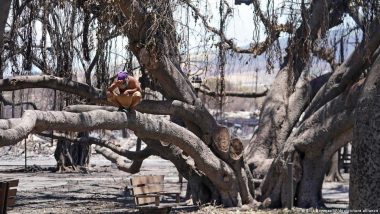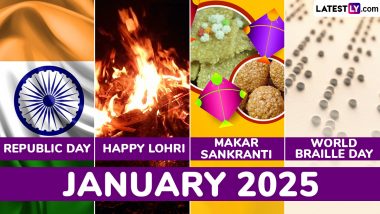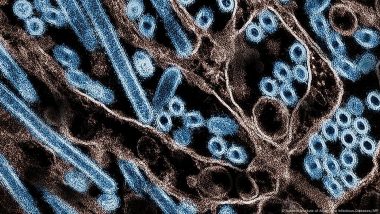Often the only way to identify the dead after natural disasters, like Libya's floods or Hawaii's wildfire, is with DNA, fingerprints and dental records.In the midst of darkness, there was good news out of Hawaii. Officials updated the death toll of fires that had ravaged the island of Maui on August 8, 2023 — adjusting the number of victims down. At first, officials had said that at least 115 people had died in the fire. They now say it was at least 97 dead.
Where does a change like this come from?
Also Read | Alzheimer: Mystery of Dying Brain Cells Solved.
In the town of Lahaina on Maui, the wildfire obliterated everything in its path. In many cases, medical examiners and law enforcement only had fragments and bones to work with in their effort to identify the dead. In some cases, they thought they had DNA samples from two people, but then the samples were from only person. And some tissue that was first thought to be from humans turned out to be pet remains.
"When the fire broke out, people ran together, they huddled together," Jeremy Stuelpnagel, Maui County physician's coroner, told Associated Press. "They're holding each other in those moments. Some of them were even holding pets."
A few days after the news out of Hawaii, officials drastically reduced their estimate of how many people had died in the floods that hit Libya in mid-September 2023.
Previously, the death toll in Libya was estimated at 11,300 people. Then, on Monday, September 18, 2023, the UN Office for the Coordination of Humanitarian Affairs said the number of fatalities was 3,958.
The initial, higher figure had come from Libyan Red Crescent, the lower estimate came from the World Health Organization.
Forensics: Giving 'people who died their identity back'
Mix-ups like this are common, said Megan Bassendale, director of Forensic Guardians, a consulting company based in Canada that helps with identifying bodies after natural disasters.
"In the immediate aftermath of emergencies often the information isn't complete or hasn't been vetted," Bassendale told DW in an email. "The remains really need to go through a proper analysis phase before you know exactly what you are dealing with. Information from the field is vital, but the forensic analysis process is essential to having firm numbers."
When a natural disaster occurs or a mass grave is discovered in a war zone, it's forensic scientists that are called upon to help identify the large number of bodies.
Disasters, such as the flood that caused devastation in Libya, often leave barely recognizable bodies behind or, if it's a fire, nothing but charred remains. The experts have to use every trick in their forensic toolkits to find out who the victims were ― an extraordinarily important task.
"If one of your family members disappeared [in a natural disaster], you'd really want to know what happened to them or, in the worst case, be able to bury them. That's what's behind this job — that the people who died get their identity back," said Rüdiger Lessig, doctor of forensic medicine and director of the Institute for Forensic Medicine at the University Hospital Halle in Germany.
Fingerprints, DNA samples, dental profiles
There are two groups of identifiers in this work.
One is basic descriptions: my best friend has red hair, my father wears a white-gold wedding band on his left ring finger, my daughter has a tattoo of a hummingbird on her right shoulder.
But these so-called secondary identifiers aren't helpful when a natural disaster has rendered the bodies of the victims unrecognizable. Even medical information (my mother has a c-section scar), another secondary identifier, wouldn't be useful when, say, a fire hasn't left behind any bodies to check for scars.
That's where the primary identifiers come in: DNA, fingerprints, dental profiles. Forensic experts diligently collect all human remains from disaster sites to gather these samples so they can be compared against dental records or DNA samples brought in by relatives. Primary identifiers can still be used when secondary identifiers have lost meaning.
"In most cases there's still enough material left that you can get a sample from," Jane Taylor, deputy head of forensics at the International Committee of the Red Cross, told DW. "You have to go into the inside of a bone. Your molar teeth are quite good sources for DNA as well. Somewhere where the internal structure has been protected."
A long, arduous process
Lessig told DW that the examination of one body to take primary identifier samples takes about an hour. That doesn't include the time it may take to get to the site of a disaster where access is difficult. And if experts can only collect remains and have to figure out which of them belong to the same body, the process is drawn out.
Identification is even more difficult when an entire city's infrastructure is wiped out, including, for example, dentists' practices. That means that all dental records that could have been used as comparison material are gone as well. A lack of DNA samples supplied by family for comparison is another factor complicating the process.
"If multiple people from a single family have died, it could be challenging to find people that will be able to give information about those that are missing (and who might be represented among the dead)," Bassendale wrote in her email.
Even without a happy end, families grateful for closure
After the Indian Ocean tsunami in December 2004, both Lessig and Taylor were part of international teams of experts that set out to identify the more than 5,000 people who had died in Thailand. The teams worked for almost 12 months before they had identified everyone they could.
"It's always important to remind families that it's a long process," Taylor said.
At the same time, the next of kin don't want anything to be rushed in the search for their loved ones, said Taylor: "It's extraordinarily important for the families that everything is done so that they can know what happened to their family member and if at all possible to have the remains… with them"
Even if the search for a mother, brother or daughter does not end happily, knowing they are dead provides relatives of the victim with desperately needed closure.
Lessig experienced that first hand: On the plane back from Thailand after the tsunami, relatives came up to him and thanked him for the work he'd done.
"You would not believe how grateful family members are, even if it's bad news, when they at least know that the body of their loved one has been identified and they can bury them," Lessig said. "That's how you deal with grief."
Edited by: Zulfikar Abbany
(The above story first appeared on LatestLY on Sep 22, 2023 05:20 PM IST. For more news and updates on politics, world, sports, entertainment and lifestyle, log on to our website latestly.com).





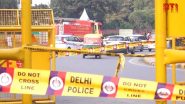

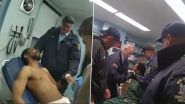





 Quickly
Quickly










